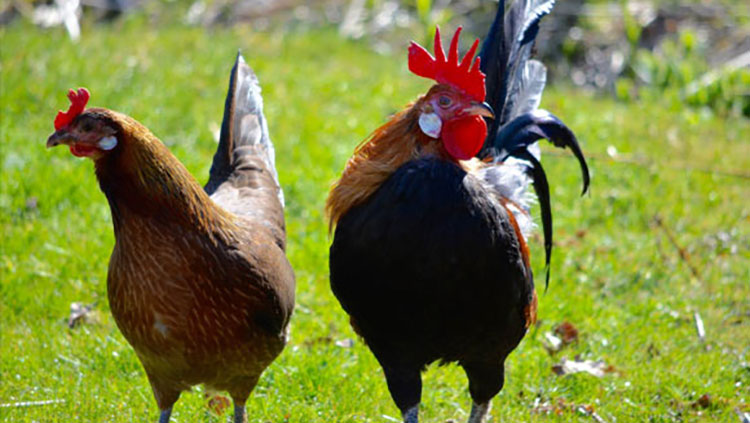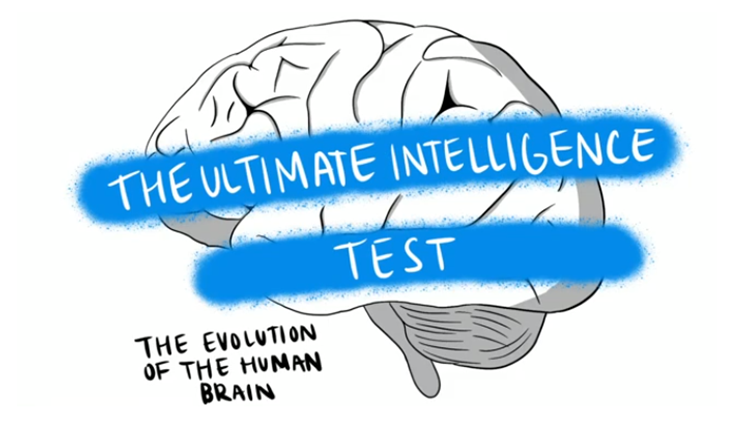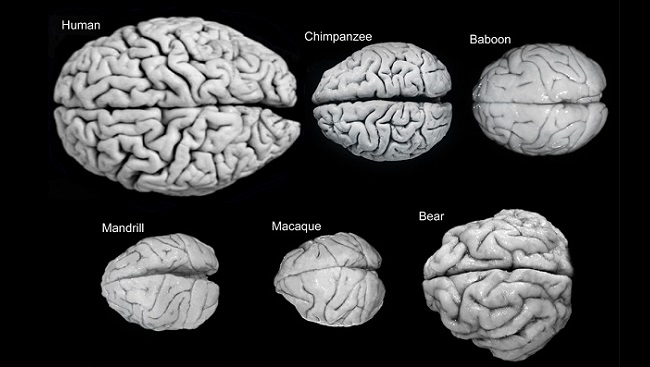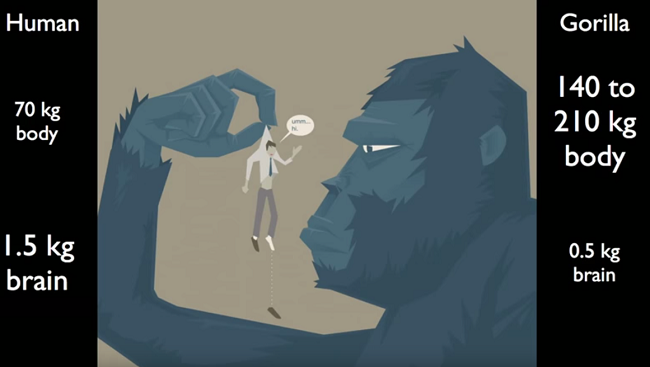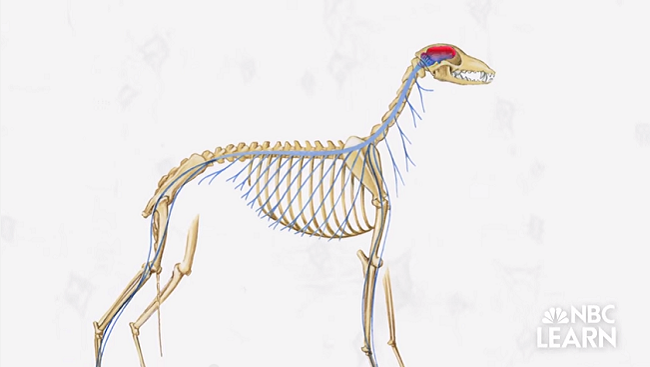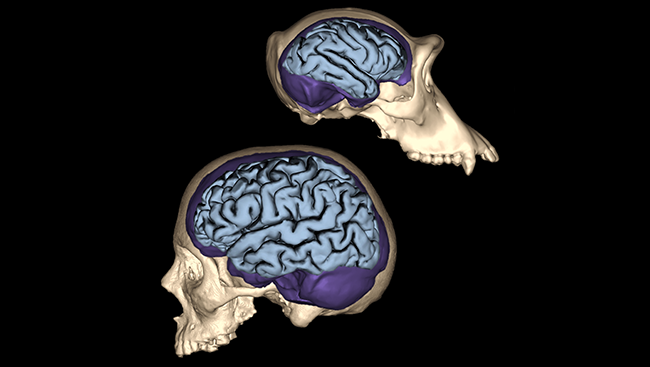Brain Evolution: Neurogenomics Targets the Genes That Make Us Human
- Published21 May 2014
- Reviewed21 May 2014
- Source The Dana Foundation
The human brain is the crowning achievement of evolution — if we have to say so ourselves. (And we do: the capacity for complex language is one thing that sets us apart from other creatures.) What makes it so special? In the past decade, neuroscientists have been taking an ever-closer look at the differences between our brains and those of our nearest non-human relatives, going beyond structure and function to the genetic matrix beneath it all.
"I think evolutionary comparisons between species who share common ancestors are central to understanding the genome," says Michael E. Zwick, of the Emory University Department of Human Genetics. "It's a powerful approach to identifying functionally important areas."
Beyond basic science, researchers believe that identifying genes and gene expression patterns unique to humans may illuminate how higher cognitive processes go wrong-and suggest treatments for disorders like autism and schizophrenia.
The field took off about a decade ago, when the advent of gene array technology made it possible to sequence genomes of different species. Research since then has shown that humans and chimps share all but 4-5% of their DNA.
Groups led by Evan Eichler and John Sikela mapped out some important specifics: several dozen duplications that distinguish us from our non-human relatives. Such variations, the same gene repeated elsewhere on the genome, usually with slight modification, have been recognized as a driving force in evolution.
A changed neuron
One of these genes, SRGAP2, attracted the attention of Franck Polleux, who was then investigating molecular and chemical processes underlying neuron development at Scripps Institute. The original, "ancestral" version (termed "SRGAP2A") appears in all primates (all vertebrates, for that matter) but only in humans, Eichler's lab determined, has evolution added variations. The one that remains functional, ("SRGAP2C") arose some 2.4 million years ago-just when the earliest humans appeared.
"When I saw SRGAP2 mentioned on a list of human-specific duplications, I jumped on it. We were already trying to understand what this gene was doing," Polleux recalls.
SRGAP2A, he and colleagues established, is essential for synapse formation (which could account for its pervasive presence across species): It plays a key role in the formation of neurite spines, the protrusions that allow neurons to communicate and form extensive networks.
As for the human-specific duplication, "there was reason to believe it would inhibit the ancestral gene," Polleux said. When his team transfected SRGAP2C into the brain of a mouse, neurons took longer to mature, as predicted, and ultimately formed significantly more synapses than those of normal mice.
"These were very exciting findings," he says. "Slower maturation and greater synaptic density are important human-neuron-specific properties." Indeed, the enhanced capacity to form synapses (30% more than neurons of non-human primates) appears fundamental to the complex connectivity behind our brain power.
To Randy Blakely, director of the Vanderbilt University/NIMH Silvio O. Conte Center for Basic Neuroscience Research, the delay of neuron maturation is highly important. "What we're talking about here are mechanisms that give the environment an opportunity to influence development, and allow early childhood to influence how the brain works.
"The more you push synaptic development and plasticity into later life, the stronger role experience can play," says Blakely, a member of the Dana Alliance for Brain Initiatives. "This timing aspect is critical to what makes us human."
Now professor of neuroscience at Columbia University's Zuckerman Mind Brain Behavior Institute, Polleux is exploring the behavioral effects of "humanizing" the mouse brain with SRGAP2C. Will transgenic mice be "smarter"? "In neuroscience, the gap between genes and circuits is huge, but so is the gap between circuits and behavioral output. Creating an animal model will be critical," he says.
Matters of expression
Genevieve Konopka, of the University of Texas Southwestern Medical Center department of neuroscience, praised the Polleux study as "one of the first where scientists identified human-specific modifications, then followed through with functional analysis. That human neuron spines are different from monkeys' and rodents' has been long known, but no one had identified the molecular mechanisms underlying the difference. Identifying SRGAP2 involvement opens up a whole new field.
"The beautiful mechanistic in vivo work they've done gets me excited about where the field can really go."Konopka's own research has taken a somewhat different tack. In a 2013 review paper, she and a colleague noted that while the proteins produced by human and chimpanzee genes are highly similar, "significant divergence in non-coding and regulatory regions"-DNA segments that determine when and where these proteins are expressed-may also hold a key to our brain's unique properties.
Comparing transcriptomes-patterns of actual gene activity-in human and primate brains, she and colleagues found striking differences in the frontal pole, a highly evolved area of the prefrontal cortex central to higher cognitive functions, but not in the caudate nucleus, which primarily regulates movement.
"Looking at single genes can certainly be informative," Konopka says. "But to me, the most striking idea is how groups of genes, changing simultaneously, have contributed to human evolution. We've been able to see how networks of thousands of genes, coexpressed in the human brain, change in concert with one another."
Much of her work in this area explores the structural design of these human-specific networks. "For us, following up on transcription factors [compounds that regulate protein expression] that are hub genes in these networks will be most informative." She has found, for example, that the gene for the transcription factor CLOCK, (best known for its role in regulating circadian rhythms) is central to the uniquely human organization of some frontal regions. A change in CLOCK might make a widespread difference in how the cortex operates.
Evolving new treatments
"It's interesting to study the human brain for basic knowledge. But I want to use this information to get insights into cognitive disorders." says Konopka.
She and others have noted that the genes and networks where human-primate differences are most pronounced have a strong association with neurological, psychiatric, and developmental disorders, and certain cancers. "How have these evolutionary changes in the human brain resulted in increased risk for disorders like autism and schizophrenia?" she asks.
There's no answer as yet, but much speculation. Randy Blakely notes that when human-specific changes prolong neuron maturation to allow advanced brain development, "negative influences come along for the ride." Increasingly, researchers look to genetics and epigenetics to unravel the enduring effects of early trauma that may lead to adult onset disorders like depression.
"I think the evolutionary approach gives us a better understanding of this," he says. "That the things that evolved to make us human may be the very same mechanisms of disease risk--that's a real change in perspective. It gives us some thoughts about how we might intervene in these mechanisms."
Discoveries in this area could have particular implications for autism spectrum disorders. "Autism is essentially a disease of synaptic dysfunction, and most of the genes shown to be mutated in autism control synaptic development," says Franck Polleux.
In delving more deeply into the molecular mechanics underlying SRGAP2's effects on neuron maturation, his team recently discovered an interaction with Homer 1-a keystone compound of synapse assembly that apparently misfires in autism.
Genevieve Konopka thinks that characterizing human-specific transcription networks may help researchers make better model systems for studying diseases like autism and schizophrenia. "We've identified single autism genes, but these have had limited utility in developing new treatments. My hope is that if we can mimic human gene co-expression patterns in rodents or cell lines, we can develop drug screening methods that could be more effective."
More generally, Blakely sees evolutionary genomics as an important first step in identifying disease risk sites, which might then be investigated and manipulated with an array of neuroscience tools and approaches.
"Looking at genes and the networks that control them are a foot in the door," he says. "What we need to do is kick that door open."
- By Carl Sherman
CONTENT PROVIDED BY
The Dana Foundation is a private philanthropic organization that supports brain research through grants and educates the public about the successes and potential of brain research.
Also In Evolution
Trending
Popular articles on BrainFacts.org



